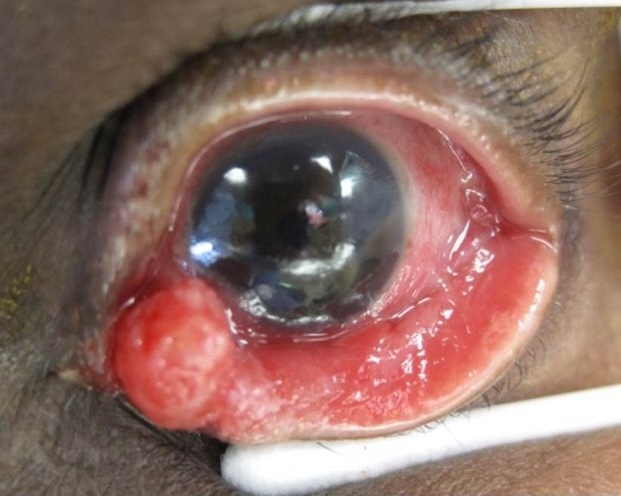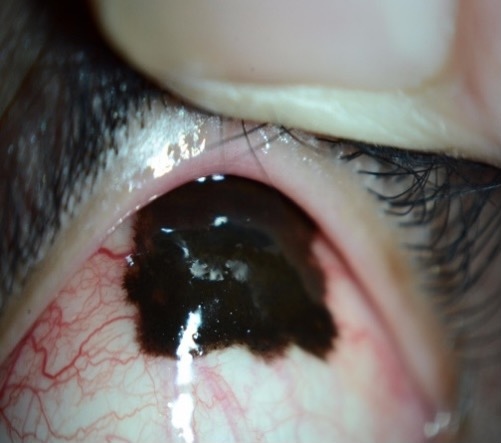<< Dr. Bita Esmaeli's homepage
Conjunctival Cancers
The conjunctiva is a thin, transparent mucous membrane that covers the white of the eye and the inner surfaces of the eyelids.
Squamous cell carcinoma (Ocular surface squamous neoplasia)


Squamous cell carcinoma, also known as ocular surface squamous neoplasia (OSSN), is the most common cancer of the conjunctiva. Risk factors for this disease include ultraviolet light exposure and smoking. Treatment typically involves surgical excision. In some cases, topical chemotherapy drops are used. For advanced disease, immune checkpoint inhibitors (immunotherapy) may be effective.
Melanoma


Conjunctival melanoma is a relatively rare cancer of the conjunctiva and also a rare form of melanoma. Due to its complexity, evaluation and treatment by an ocular oncology specialist is recommended. The primary treatment is surgical excision, often followed by topical chemotherapy drops. Immune checkpoint inhibitors (immunotherapy) may be used for locally advanced, recurrent, or metastatic cases.
Nevus
A conjunctival nevus is a benign pigmented lesion, commonly referred to as a mole, that occurs on the conjunctiva. Conjunctival nevi are most commonly diagnosed in childhood or adolescence. Malignant transformation to conjunctival melanoma is rare. Surgical removal may be considered if the lesion shows growth, has concerning features, or for cosmetic reasons.
Lymphoma

Conjunctival lymphoma is usually a low-grade, non-aggressive cancer that presents as a salmon-colored patch on the surface of the eye or the inner eyelid. Diagnosis is confirmed by biopsy, typically performed by an ophthalmic oncology specialist. Following tests to evaluate the stage and extent of the disease, treatment commonly involves very low-dose radiation therapy.